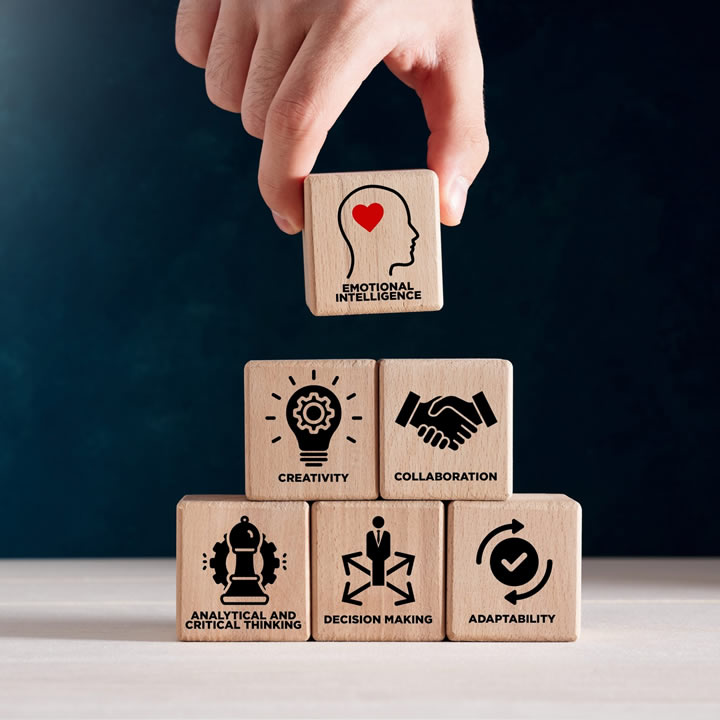Project management thrives at the intersection of hard-nosed analytics and the human touch. On one side, we’ve got the structured, analytical dance – pinpointing exact metrics and weaving through the maze of KPIs using tools like modern project management dashboards.
Yet, on the flip side, there’s the vast ocean of human emotion, unpredictable and profound. Herein lies the drama of Emotional Intelligence (EI) – a star player, often undervalued, in the theater of project success.
Unpacking the Five Components of EI
- Self-awareness: It’s a mirror reflecting our emotional landscape. By recognizing and comprehending our emotions, we can predict specific triggers, thus more tactfully navigating interactions.
- Self-regulation: Think of it as our emotional thermostat. While we can’t always choose the weather, we can decide our response – ensuring calm amidst a storm of project challenges.
- Motivation: This isn’t about the glint of a bonus or the allure of a corner office. That internal flame is a passion that keeps project managers scaling mountains because the climb brings joy.
- Empathy: It’s like donning someone else’s shoes, even for just a mile. Tuning into the emotional channels of others fosters mutual respect and understanding, making project terrains less thorny.
- Social skills: Beyond mere pleasantries at the coffee machine, it’s about weaving the fabric of relationships. Mastering this art can spell the difference between a project’s success and its downfall.
How EI and Project Management Interact
Imagine navigating a vast, complex maze. Projects, in their essence, resemble these mazes. Each turn and corridor reflects intricate tapestries woven with the vibrant threads of diverse personalities, ever-evolving goals, and unforeseen challenges.
The tapestry is dense with the daunting weight of expectations, colored by the hues of hope and ambition. The analytical tools we possess? They’re akin to a compass – invaluable, pointing to the gold of clarity and direction amidst potential chaos.
Yet, a compass alone can’t feel the wind or sense the ambiance. Here’s where Emotional Intelligence, our EI, steps in. It’s the gentle touch, the intuition, scenting the room’s mood, adapting to the subtle changes in the air.
Mix this touch with our analytical compass.
Suddenly, the maze doesn’t seem so daunting. Instead of dead-ends, challenges become intriguing doorways, stepping stones leading to new, uncharted territories. This dynamic duo – the precision of analytics with the heart of EI – crafts a journey and a memorable adventure.
Enhancing Your EI Toolkit: Tips and Tactics
- Self-assessment and reflection: Dive deep. It’s a soul search, a journey inward. Through introspection, find your emotional pulse and rhythm, leading to enhanced interactions.
- Active listening: Beyond the words lies a universe of intent, emotion, and unspoken pleas. Tune in, and you’ll discover layers you never knew existed, enriching every conversation.
- Conflict resolution: It’s an art painted with strokes of empathy and understanding. The masterpiece? Disagreements morph into discussions, and conflicts melt into consensus.
- Learning, always learning: The world of EI? It’s vast, its depths uncharted. Plan through courses or workshops and discover treasures that can redefine your project journeys.
The Bounty of Melding EI with Project Management
The harmonious blend of EI in project landscapes? It’s poetic. Teams are humming in unity, decisions carved with precision yet empathy, and stakeholders are satisfied—fewer hiccups, reduced conflicts, and a journey as rewarding as the destination.
Parting Thoughts
The meticulous precision of analytical tools like modern dashboards is undoubtedly the spine of project management. But EI? It’s the heartbeat. In the grand dance of projects, it’s wise to let both lead, at times.
Because a project isn’t just about milestones reached but also stories lived.

